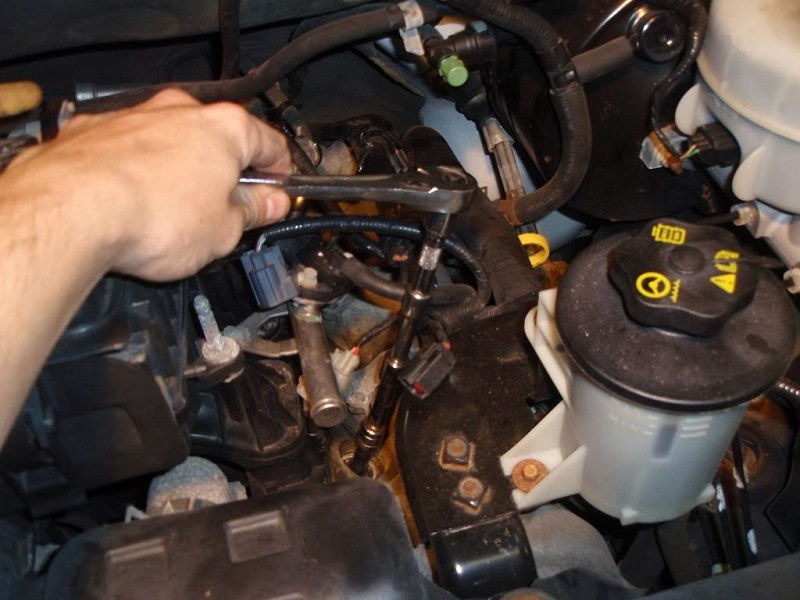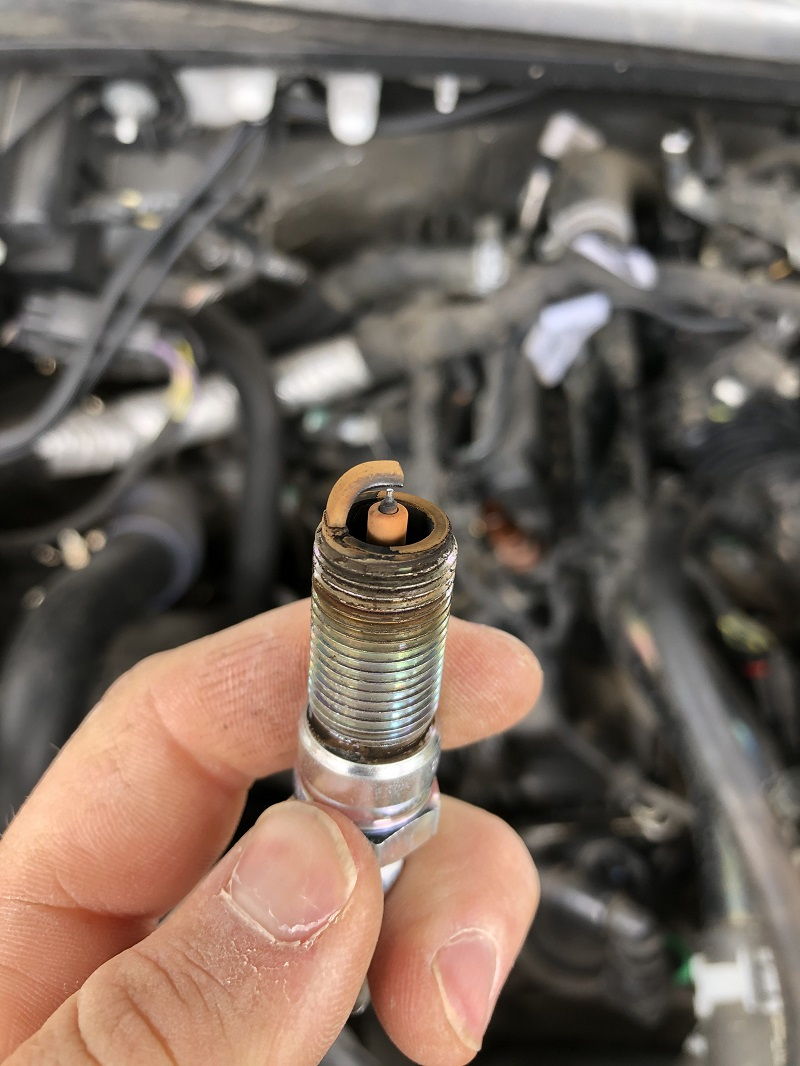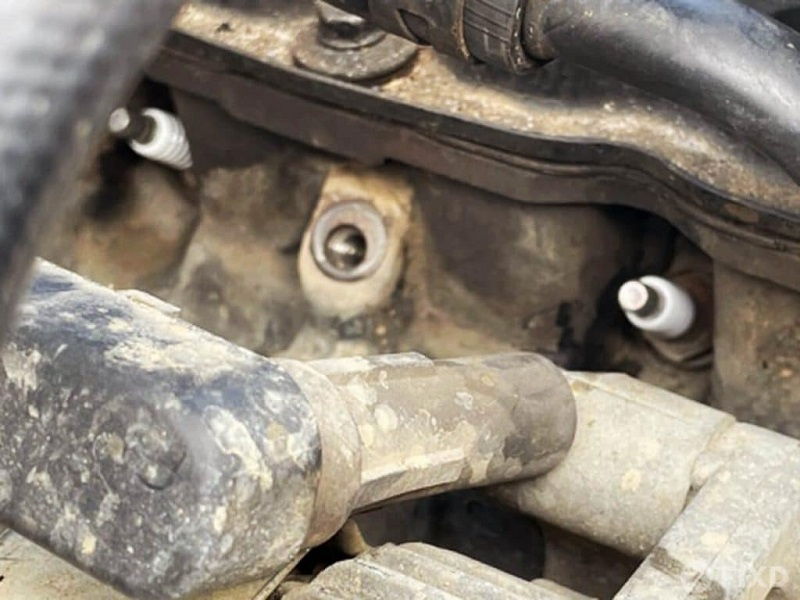This post contains affiliate links. This means I will make a commission at no extra cost to you should you click through and make a purchase [ “As an Amazon Associate, I earn from qualifying purchases.” ]. Read the full disclosure here.
F150 Spark Plug Replacement GuideMechanic.Com When it comes to maintaining your F150 truck, one crucial aspect is spark plug replacement.
Spark plugs play a vital role in igniting the air and fuel mixture within the engine cylinders, ensuring smooth and efficient combustion.
Over time, spark plugs can wear out or become fouled, leading to reduced engine performance, decreased fuel efficiency, and even engine misfires.
In this comprehensive guide, we will walk you through the steps of replacing spark plugs in your F150, providing you with all the information you need to keep your vehicle running at its best.
Understanding the Importance of Regular Spark Plug Replacement
Signs of Worn-Out Spark Plugs

Before diving into the replacement process, it’s crucial to understand when your F150’s spark plugs need to be replaced.
See Also: Valvoline Spark Plug Replacement Cost
Some common signs of worn-out spark plugs include rough idling, poor acceleration, decreased fuel efficiency, engine misfires, and difficulty starting the vehicle. If you notice any of these symptoms, it’s time to consider replacing your spark plugs.
The Consequences of Neglecting Spark Plug Replacement
Neglecting spark plug replacement can have several negative consequences for your F150’s performance and overall engine health.
Worn-out spark plugs can lead to reduced engine power, decreased fuel efficiency, and increased emissions.
Additionally, failing to replace spark plugs promptly can cause damage to other engine components, such as the ignition coils and catalytic converter, leading to costly repairs in the long run.
Gathering the Necessary Tools and Materials
Tools Required for Spark Plug Replacement
Before starting the replacement process, gather the necessary tools. You will need a socket wrench with spark plug sockets, a spark plug gapping tool, a torque wrench, a spark plug boot puller, and a spark plug wire puller. Additionally, have a clean rag or towel, dielectric grease, and a can of compressed air on hand.
Choosing the Right Spark Plugs
When it comes to selecting new spark plugs for your F150, it’s essential to choose the correct type and specifications.
Refer to your vehicle’s owner’s manual or consult with a trusted mechanic to determine the appropriate spark plug brand, heat range, and gap size for your specific F150 model. Using the recommended spark plugs will ensure optimal performance and compatibility.
Locating and Accessing the Spark Plugs
Locating the Spark Plugs
The location of the spark plugs may vary depending on the F150 model and engine type. In most cases, the spark plugs are located on the top of the engine block, underneath the ignition coil pack or individual ignition coils.
Consult your vehicle’s owner’s manual or refer to online resources for the exact location of the spark plugs in your specific F150 model.
Accessing the Spark Plugs
Accessing the spark plugs can require removing some components, such as the engine cover or air intake system.
Carefully follow the instructions outlined in your vehicle’s manual to safely remove any necessary parts and gain access to the spark plugs. Take note of any electrical connections or hoses that need to be disconnected during this process.
Removing the Old Spark Plugs
Preparing for Spark Plug Removal

Before removing the old spark plugs, ensure that the engine is cool to avoid any risk of burns. Disconnect the negative terminal of the battery to prevent any electrical mishaps during the process.
See Also: 2016 Ford Fusion Spark Plugs
Take a moment to familiarize yourself with the spark plug wires or ignition coil connections, as they will need to be disconnected to access the spark plugs.
Removing the Spark Plug Wires
If your F150 is equipped with spark plug wires, carefully grasp the boot of the wire near the spark plug and twist it gently while pulling upward.
Avoid pulling on the wire itself, as it may detach from the boot or get damaged. Use a spark plug wire puller if necessary to aid in the removal process.
Removing Ignition Coils
If your F150 has individual ignition coils, locate the bolts or screws securing the coil pack in place. Use a socket wrench to remove these fasteners and carefully lift the ignition coil straight up to disconnect it from the spark plug. Take care not to damage the coil or its electrical connections.
Removing the Old Spark Plugs
With the spark plug wires or ignition coils removed, it’s time to remove the old spark plugs. Attach the appropriate socket size to your socket wrench and carefully insert it onto the spark plug. Gently loosen the spark plug by turning it counterclockwise.
Once loose, continue turning until you can remove the spark plug by hand. Repeat this process for each spark plug.
Inspecting and Cleaning the Spark Plug Wells
Inspecting the Spark Plug Wells
After removing the old spark plugs, take a moment to inspect the spark plug wells. Look for any signs of oil or debris accumulation, which may indicate a potential issue. If you notice excessive dirt or oil, it’s essential to clean the wells before installing the new spark plugs.
Cleaning the Spark Plug Wells
Using a clean rag or towel, carefully wipe away any dirt or debris from the spark plug wells. Take caution not to drop any debris into the cylinders.
If there is oil present, it may be necessary to consult with a mechanic, as it could indicate a more significant engine issue that requires attention.
Blowing Out the Spark Plug Wells
For a more thorough cleaning, use a can of compressed air to blow out any remaining dirt or debris from the spark plug wells.
Point the nozzle of the compressed air can into the wells and release short bursts of air to dislodge any loose particles. This step will help ensure a clean and debris-free environment for the new spark plugs.
Installing the New Spark Plugs
Gap Check and Adjustment
Before installing the new spark plugs, it’s crucial to check and adjust the gap to the manufacturer’s specifications.
Each spark plug should come pre-gapped, but it’s always a good idea to double-check. Use a spark plug gapping tool to measure the gap and adjust it as necessary. Refer to your vehicle’s manual or spark plug manufacturer’s guidelines for the correct gap measurement.
Applying Anti-Seize Compound (Optional)
Applying a thin layer of anti-seize compound to the threads of the new spark plugs is optional but highly recommended.
Anti-seize compound helps prevent the spark plugs from seizing or getting stuck in the engine block, making future removal easier.
Be sure to apply a small amount of anti-seize compound to the threads and avoid getting it on the electrode or insulator.
Installing the New Spark Plugs
With the spark plugs gapped and, if desired, anti-seize compound applied, it’s time to install the new spark plugs. Carefully thread each spark plug into its respective cylinder by hand.
Use the socket wrench to tighten the spark plugs gently, ensuring they are snug but not over-tightened. Over-tightening can damage the threads or cause the spark plugs to break upon removal in the future.
Reinstalling Spark Plug Wires or Ignition Coils
If your F150 has spark plug wires, reconnect them by pressing the boot firmly onto the new spark plugs until you hear a click or feel a secure connection.
See Also: 2006 Honda Odyssey Spark Plugs: Step-by-step guide to replacing
For vehicles with individual ignition coils, carefully position each coil over its respective spark plug and reinstall the bolts or screws to secure them in place. Take care not to over-tighten the fasteners, as it may damage the coil or the spark plug.
Reassembling and Testing
Reassembling Removed Components
Now that the new spark plugs are installed, it’s time to reassemble any components that were removed during the access and removal process.
Follow the reverse order of removal, ensuring all electrical connections and hoses are properly reconnected. Take your time and double-check that everything is securely in place before proceeding.
Testing for Optimal Performance
After reassembling, it’s crucial to perform a comprehensive test to ensure everything is functioning as expected. Start the engine and let it idle for a few minutes to allow the new spark plugs to settle in.
Listen for any abnormal noises or vibrations and pay attention to the engine’s smoothness. Take the vehicle for a test drive, accelerating and decelerating to evaluate the engine’s performance. If you notice any persistent issues, consult with a mechanic for further inspection.
Maintaining Spark Plug Health
Regular Inspections

To maintain the health of your spark plugs, it’s important to inspect them regularly. Check for signs of wear, such as eroded electrodes or excessive carbon buildup.
Regular inspections will help you identify and address any potential issues before they escalate and affect engine performance.
Cleaning Spark Plugs
If you notice minor carbon deposits on your spark plugs during inspections, you can cleanthem to prolong their lifespan.
Use a soft wire brush or a spark plug cleaning tool to gently remove carbon deposits from the electrodes and insulator.
Avoid using abrasive materials that may damage the spark plug’s surface or alter the gap. After cleaning, inspect the spark plugs again to ensure they are in good condition before reinstalling them.
Replacement Intervals
While spark plug replacement intervals can vary depending on factors such as driving conditions and the type of spark plugs installed, it’s generally recommended to replace them every 30,000 to 50,000 miles. Consult your vehicle’s manual or the spark plug manufacturer’s recommendations for the specific replacement interval for your F150 model.
Using Quality Spark Plugs
When it comes to replacing spark plugs, it’s crucial to use high-quality, OEM (Original Equipment Manufacturer) or equivalent spark plugs.
Investing in quality spark plugs ensures optimal performance, longevity, and compatibility with your F150’s engine. Cheaper or generic spark plugs may not provide the same level of reliability and performance.
Regular Tune-Ups
Regular tune-ups, which include spark plug replacement as part of the maintenance routine, are essential for keeping your F150 running smoothly.
See Also: 2008 BMW 328i Spark Plugs
During a tune-up, other components such as the air filter, fuel filter, and ignition system are also inspected and serviced if necessary. By addressing all these areas, you can maintain the overall health and performance of your vehicle.
Frequently Asked Questions (FAQs)
Q: Can I replace the spark plugs on my F150 myself?
A: Yes, spark plug replacement is a task that can be done by many vehicle owners with basic mechanical knowledge and the right tools.
However, if you are unsure or uncomfortable performing this task, it’s always best to consult with a professional mechanic.
Q: How do I know if my F150’s spark plugs need to be replaced?
A: Look out for signs such as rough idling, decreased fuel efficiency, engine misfires, poor acceleration, and difficulty starting the vehicle. If you experience any of these symptoms, it’s likely time to replace your spark plugs.
Q: Can I replace only one or two spark plugs instead of all of them?
A: While it’s possible to replace only one or two spark plugs, it’s generally recommended to replace all of them at once. This ensures consistent performance across all cylinders and prevents potential issues in the future.
Q: How long do spark plugs typically last in an F150?
A: Spark plug lifespan can vary depending on several factors. On average, spark plugs in an F150 can last between 30,000 to 50,000 miles.
However, it’s essential to follow the specific replacement interval recommended by your vehicle’s manufacturer.
Additional Resources and Expert Advice
For more detailed information and expert advice on F150 spark plug replacement, consider referring to the following resources:
1. F150 Owner’s Manual: Your vehicle’s owner’s manual provides specific instructions and guidelines for spark plug replacement, tailored to your F150 model.
2. Online Forums and Communities: Participating in online forums and communities dedicated to F150 owners can provide valuable insights, tips, and recommendations from experienced enthusiasts.
3. Video Tutorials: Various online platforms, such as YouTube, offer video tutorials that visually guide you through the spark plug replacement process for your specific F150 model.
4. Local Mechanic or Dealership: If you have any concerns or prefer professional assistance, don’t hesitate to consult with a trusted local mechanic or your F150 dealership. They can provide personalized guidance and perform the spark plug replacement for you.
In conclusion, spark plug replacement is a crucial maintenance task for your F150 truck. By following the comprehensive guide provided in this article, you can ensure smooth engine operation, optimal fuel efficiency, and prevent potential issues down the road.
Regular spark plug replacement will keep your F150 performing at its best and prolong its overall lifespan.
Remember to always follow safety precautions and consult your vehicle’s manual for specific instructions. Happy spark plug replacement!
See Also: 2007 BMW 328i Spark Plugs
Related video of F150 Spark Plug Replacement: A Comprehensive Guide for Your Vehicle Maintenance
- Custom Lifted Diesel Trucks for Sale - December 20, 2025
- New Lifted Diesel Trucks for Sale - December 19, 2025
- Old Lifted Diesel Trucks for Sale - December 18, 2025

